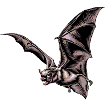Museum, University of Nebraska State

University of Nebraska State Museum: Mammalogy Papers
Document Type
Article
Date of this Version
4-2011
Citation
Canadian Journal of Zoology (2011) 89: 278–288.
doi: 10.1139/Z11-001
Abstract
Short-tailed shrews (genus Blarina Gray, 1838) are characterized by divergent karyotypes and are genetically distinct. Blarina species are similar morphologically but, in most cases, can be distinguished morphometrically. Blarina distributions tend to be parapatric along well-defined contact zones; however, it has been suggested that the northern short-tailed shrew (Blarina brevicauda (Say, 1823)) and Elliot’s short-tailed shrew (Blarina hylophaga Elliot, 1899) occur sympatrically in Iowa and Missouri. To evaluate this possibility, 179 specimens were collected in southwestern Iowa and northwestern Missouri. Karyotypes and total length were used for field identification, and amplified fragment length polymorphism (AFLP) analysis was used to verify field identifications and to investigate the extent of hybridization. One hundred seventy-eight of 179 specimens were identified to species. The one exception had a karyotype of B. brevicauda (2n = 50, FN = 48); however, AFLP analysis indicated that this individual was likely an F1 hybrid. No backcrosses were detected, so it appears that introgression is minimal. The putative hybrid was trapped at a locality with B. brevicauda just north of a locality having only B. hylophaga. No locality contained both species. Therefore, these species are not broadly sympatric as has been suggested, but rather exhibit a distribution similar to the pattern of parapatry seen in most of the contact zones of Blarina.
Les musaraignes à queue courte (du genre Blarina Gray, 1838) se caractérisent par des caryotypes divergents et sont génétiquement distinctes. Les espèces de Blarina sont semblables morphologiquement, mais dans la plupart des cas, la morphométrie permet de les distinguer. Les répartitions des Blarina ont tendance à être parapatriques le long de zones de contact bien définies; on croit néanmoins que la grande musaraigne à queue courte (Blarina brevicauda (Say, 1823)) et la musaraigne à queue courte d’Elliot (Blarina hylophaga Elliot, 1899) se retrouvent en sympatrie en Iowa et au Missouri. Afin de vérifier cette possibilité, nous avons récolté 179 spécimens dans le sud-ouest de l’Iowa et le nord-ouest du Missouri. Les caryotypes et la longueur totale nous ont servi pour les identifications de terrain et une analyse du polymorphisme des longueurs des segments amplifiés (AFLP) a permis de confirmer les identifications de terrain et de déterminer l’importance de l’hybridation. Des 179 spécimens, 178 ont été identifiés à l’espèce. La seule exception avait un caryotype de B. brevicauda (2n = 50, FN = 48); cependant l’analyse de ALFP indique que cet individu est vraisemblablement un hybride de F1. Comme il n’y a aucune indication de rétrocroisement, l’introgression semble minimale. L’hybride putatif a été piégé dans une localité contenant B. brevicauda située juste au nord d’une localité où vit seulement B. hylophaga. Aucune localité ne contient les deux espèces. Les deux espèces ne possèdent donc pas une importante zone de sympatrie, comme on le croyait; ils ont plutôt une répartition parapatrique du type observé dans la plupart des zones de contact de Blarina.


Comments
Published by NRC Research Press. www.nrcresearchpress.com/cjz